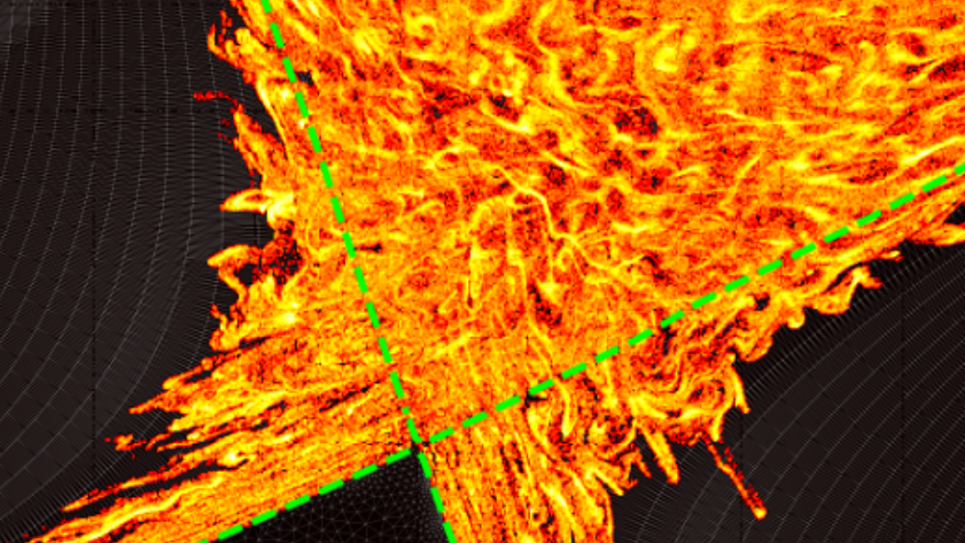
An image of the turbulence driven fluctuating homoclinic tangle found from XGC simulations that destroys the last confinement surface (separatrix) near the magnetic X-point in 15MA ITER.
This INCITE project will employ the electromagnetic gyrokinetic particle-in-cell code XGC, with most of the important physics included, to perform two-pronged fundamental edge physics studies of critical importance to the successful operation of ITER and for the design of Fusion Power Plants (FPPs). The first is mitigating high stationary heatflux densities that will damage material walls while maintaining the high edge plasma pedestal within a safe operational window. The second is avoiding explosive transient power-flow to material walls caused by edge localized mode (ELM) crash whose onset is influenced by the plasma condition near the wall.
As has been demonstrated in previous INCITE-supported XGCbased studies in pure deuterium plasmas, an edge physics regime different from the present experimental tokamaks has been observed due to the greater size of ITER. Thus, projection of the physics observations from present tokamaks to ITER is unwarranted. These studies require more powerful computers due to the inclusion of several more critical physics elements that could not be handled by the previous INCITE resources.